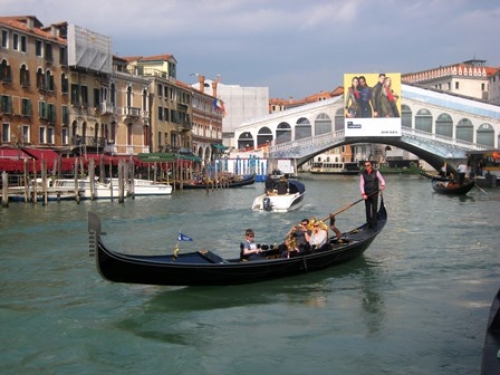I was recently in Venice, returning after about three decades, and the fascination for the City of the Doge is always the same.
Doge comes from the Latin word dux, which means military leader. The Doge was the antique commander in chief of the Serenissima Republic of Venice for many centuries. And this city still leads the rank as one of the most unique places in the world.
Completely built on water, Venice has remained pretty much the same through centuries. Due to the total absence of cars and impossible construction of new buildings, when we come to Venice we walk straight into the past, in spite of all the tourists around us. This is what makes this city peculiar. The only way to move around Venice is on foot, by ferries or by gondolas. I learned a lot about these boats while I was there.
The gondola is probably the most famous Venetian icon. It is a flat-bottomed, asymmetrical rowing boat, particularly suited to navigate on the canals. A gondola weighs about 1,300 pounds and it is about 12 yards long. It is completely hand-made, assembled from 280 single pieces. These pieces are made from eight different types of wood, each with its specific function and mechanical properties: fir, mahogany, elm, cherry, oak, walnut, larch, and beech.
The wood is treated for up to a year before it can be wrought into the asymmetrical shape of the boat. Several layers of black varnish are then applied. Exquisite ornamentation, velvet seats, pillows, and golden stripes can give the final touches to this floating artwork, whose final price is about $40,000.
The boat’s left side is longer than its right, so that it can resist the tendency to turn toward the left at the forward stroke. In fact, the gondolier, the rowing person with a traditional black and white horizontal striped shirt, leads the boat, standing in the back and using one oar on the right side.
The iron prow head of the gondola has an S shape symbolizing the twist of the Grand Canal, with six teeth under the main blade, standing for the six districts of Venice, called sestrieri: Cannaregio, Castello, Dorsoduro, Santa Croce, San Marco, and San Polo.
There are only four crafted manufacturers still building gondolas in Venice with the traditional method. It takes about two months for these highly skilled artisans to build a gondola. They have to make and assemble the 280 pieces; some of them are particularly important. For example, the forcola is the typical Venetian rowlock, entirely hand-made, with a unique part that provides a variety of fulcrum positions to change the speed and the direction of the boat.
The gondolier has to know these positions very well in order to handle the gondola in all types of circumstances. To become a professional gondolier, one must attend the gondola school. They learn not only the skills of navigation, but also foreign languages, Venetian art and history. After the 12-month training course and apprenticeship, the gondolier must past an official licensing exam with a practical test in the canals. Currently there are 433 gondoliers in Venice, down from about 7,000 in the Middle Ages. Many of them inherit the trade from their fathers.
A standard 40 minute ride is about $100, but some tourists tip these peculiar rowers if they have been particularly nice, educational and fun. Arrivederci Venezia!



